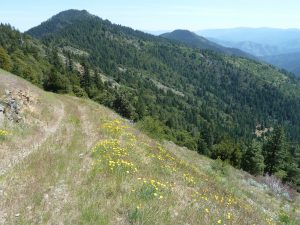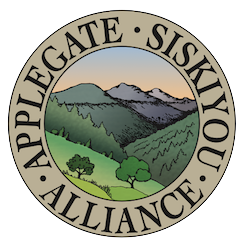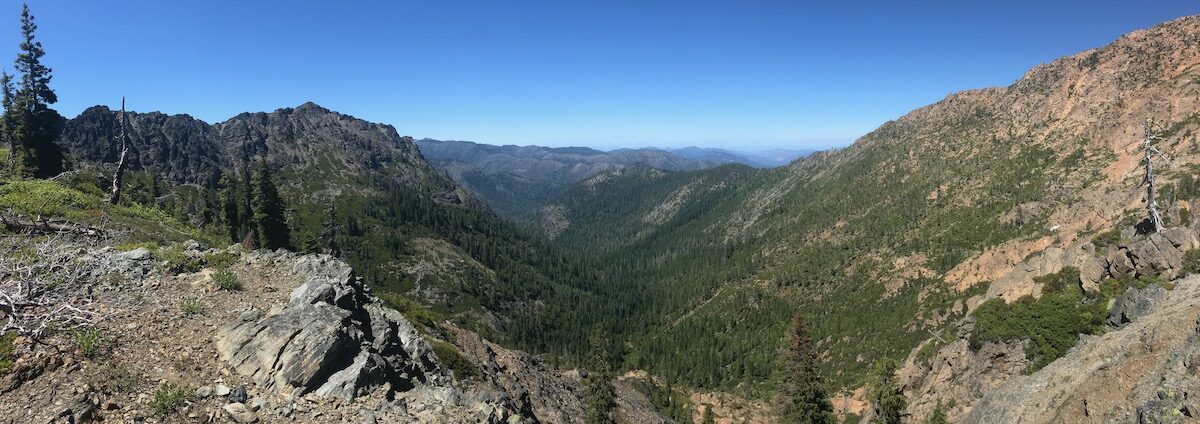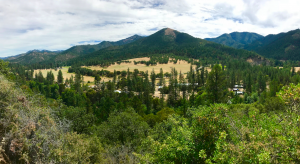
For over three years, the Upper Applegate Watershed Restoration Project (UAW) has been collaboratively developed by ANN, Applegate Valley residents, other non-profit organizations, the Rogue River-Siskiyou National Forest and the Medford District BLM. ANN and our many supporters have contributed hundreds of hours working and volunteering to create outcomes that are beneficial for the land and the people of the Applegate Valley.
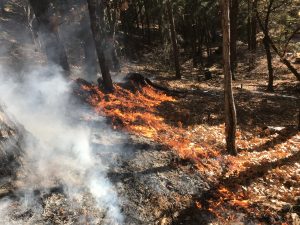
Many of the project proposals have been identified and supported by ANN and other community partners. Together we have been instrumental in developing the innovative prescribed fire and fuel reduction treatments designed to create a more fire safe community and fire resilient forest in the Upper Applegate Valley. We have also strongly supported the focus on thinning existing tree plantations, which create the most unnatural fuel loads and are the highest priority for habitat restoration in the entire watershed.
Yet, despite the focus on fuel reduction and community safety, ANN has pushed to make the project much more than your average fuel reduction project. We have been striving to provide benefits to the local community and to advocate for a more holistic and ecological land management approach. The project also proposes new non-motorized trails, the decommissioning of illegal OHV trails, road decommissioning and pollinator/native plant restoration projects.
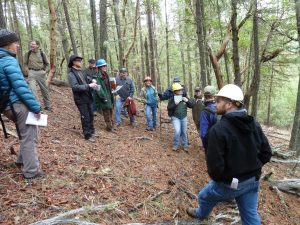
Throughout the early stages of the planning process we created significant agreement around the values of conservation, restoration and community fire protection. Working from this place of common ground, partners created a broadly supported and ecologically beneficial project that many in the Applegate Valley could support.
After one and a half years of productive collaboration, and over the objection of many collaborative partners, the Forest Service and BLM suddenly changed the definition of restoration we had been working off of and inserted numerous off-road vehicle trails into the project’s Proposed Action. No longer working from a place of agreement, the agencies badly damaged the collaborative process by infusing the project with conflict and controversy.
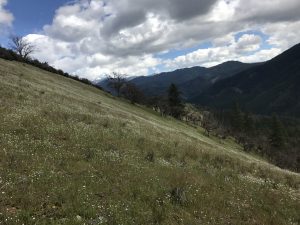
ANN and many Applegate Valley residents opposed the new OHV trails. We forced the agency to analyze the ecological impact of motorized trail development, and two off-road vehicle trails originally proposed in the Boaz Mountain Roadless Area were canceled. Recently, the Forest Service and BLM published the Upper Applegate Watershed Restoration Project Environmental Assessment (EA), and despite local residents’ opposition, the EA still proposes three new off-road vehicle trails in the Beaver Creek watershed.
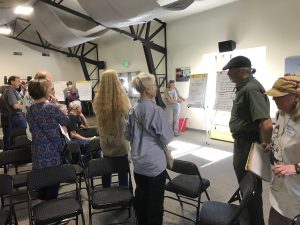
Many collaborating partners believe the proposed off-road trails are inconsistent with the “Purpose and Need” (the official premise from which the project is planned), as well as project objectives that seek to restore habitat and water quality. We also think that including new OHV trails in the project does not reflect the common ground we had achieved in the first year and a half of planning meetings. Although many of the collaborative partners have supported the UAW Project and its restorative approach to land management, many are also concerned by the inclusion of off-road vehicle trails under the guise of “restoration.” It is a precedent setting action and contradiction that we simply cannot ignore.
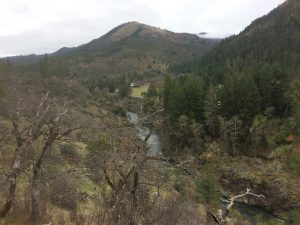
The UAW Environmental Assessment (EA) defines the need for the project as follows: “The underlying need for the action is to restore ecological and social conditions and processes in the Upper Applegate Watershed to provide for landscape conditions resilient to disturbance and climate change” ( EA p. 4).
The EA describes the Purpose of the UAW Project as follows: “The Purpose of the action is to protect and enhance the important community and agency identified values through the attainment of the following goals:
Water and Aquatic Habitat – Improve watershed conditions and reduce road-related impacts to natural resources.
Terrestrial Biodiversity – Improve ecosystem resilience and function at the landscape scale in order to sustain healthy forests and watersheds for future generations.
Community and Culture – Provide protection to communities at risk from wildland fire, provide for sustainable recreation opportunities, and to improve community involvement for stewardship of the land to foster a respect for ecosystems and the processes that maintain them.”
Instead of providing restorative or fuel reduction benefits, new off-road trails will discourage attainment of the Purpose and Need of the UAW Project by creating additional ecological impacts. For example, the proposed Hanley Gulch OHV Trail will traverse a Riparian Reserve on a previously decommissioned road bed, degrading, rather than restoring or even maintaining water quality and aquatic habitat.
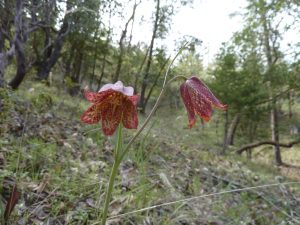
The proposed Cinnabar Lookout Trail would provide off-road vehicles access to the Beaver Creek-Little Applegate River divide by building new OHV trails through a Fritillaria Management Area, designated to protect the endangered and highly esteemed Gentner’s fritillary (Fritillaria gentneri) and it’s habitat.
New off-road vehicle trails will degrade connectivity and biodiversity values by spreading noxious weeds, damaging native plant habitats, and disturbing wildlife. Many other ecological values will be affected, including impacts to streams and riparian areas, increased soil erosion, and sedimentation. Nearby communities will also be impacted by increased engine noise in previously quiet forests near their homes. Increased off-road vehicle use will also introduce a new wildfire ignition source in the form of hot motorcycle mufflers in dry, summer conditions near Applegate residences.
The inclusion of off-road vehicle trails is controversial, counterproductive and undermines public support for restoration and the UAW Project. New OHV trails are a damaging distraction and create conflict when so much common ground has been found. The inclusion of OHV trails in a restoration project tarnishes authentic efforts to restore native ecosystems.
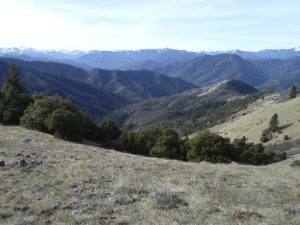
The UAW Project should be focusing on fire safety, forest restoration, the restoration of aquatic habitats and the maintenance of biodiversity as the Purpose and Need requires.
Please consider commenting on this important project. Comments are being accepted until December 20, 2018. Consider signing our form letter, amend the form letter to reflect your specific concerns, or better yet, create a your own public comment identifying your concerns and perspectives in your own voice. The agencies need to hear from you that off-road vehicle trails should not be included in a habitat restoration project.
Click Here to Sign or Amend a Form Letter
Check out the following suggested talking points and ideas that can help with the public comment process.
- Focus the project on common ground built during the planning process such as prescribed fire, tree plantation thinning, and fuel reduction around homes and communities.
- Support native plant and pollinator restoration projects proposed in the UAW Project.
- The agencies should analyze off-road vehicle use through the appropriate planning process. Analysis in the UAW EA does not adequately account for cumulative ecological impacts. The BLM is required to inventory all off-road vehicle trails and conduct Travel Management Planning across the region by 2021. They should defer off-road vehicle designations until that process is completed. The Forest Service should conduct regular reviews of their Motor Vehicle Use Map (MVUM), making decisions regarding off-road vehicle use through the appropriate public process.
- Cancel all motorized/off-road vehicle trails currently proposed in the UAW EA. The proposed motorized trails will degrade habitat rather than restore or improve habitat and they are inconsistent with the Purpose and Need of the UAW Project.
- Close existing unauthorized off-road vehicle trails and decommission unnecessary roads identified in the UAW EA.
- Support the Tallowbox Trail (non-motorized) on BLM land. Currently the BLM have turned portions of the proposed non-motorized trail into an off-road vehicle route without adequate NEPA documentation or review. Ask the BLM to designate the entire Tallowbox Trail, as originally proposed, including those portions below Tallowbox Mountain as a non-motorized trail. (This will turn the old, decommissioned road on Tallowbox Mountain into a non-motorized hiking trail).
- Support other non-motorized trails, including the Applegate Ditch Trail extending between Palmer Creek Road and the Applegate Dam, and the Brushy Gulch Ditch Trail below the Applegate Dam.
Send Comments to District Ranger Donna Mickley electronically at:
comments-pacificnorthwest-rogueriver-siskiyoumountains@fs.fed.us
or through mail to:
Siskiyou Mountains Ranger District
Attn: Upper Applegate Watershed Restoration Project,
6941 Upper Applegate Road, Jacksonville, Oregon, 97530.
